Active vs Passive Noise Reduction: Which is Best for Pilots in 2025? - Pilot Mall
Shopping for pilot headsets in 2025? Understanding Active Noise Reduction (ANR) versus Passive Noise Reduction (PNR) is key. This guide dives deep into how each technology works, the pros and cons for pilots, whether ANR is worth the investment, and what to look for in a headset. Plus, we reveal our top picks for the best ANR aviation headsets in 2025, including the latest from Bose, Lightspeed, and David Clark, to help you fly safer and more comfortably.
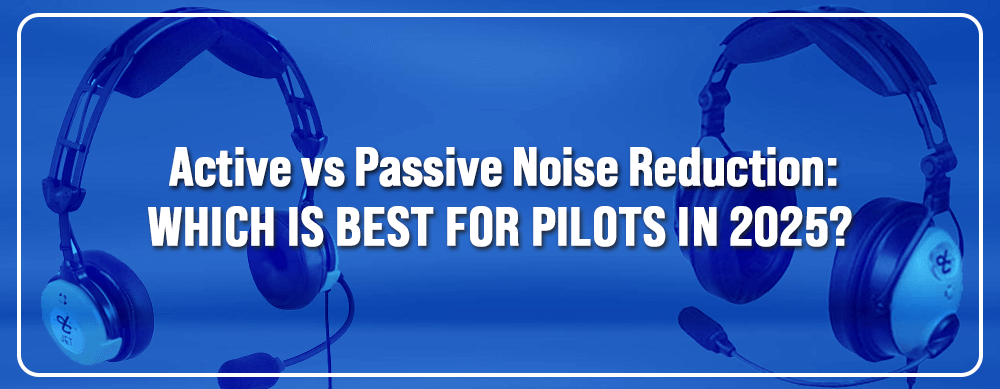
Featured Pilot Gear
Browse our selection of high-quality pilot supplies! Your purchase directly supports our small business and helps us continue sharing valuable aviation content.
In this updated 2025 guide, we’ll explore the differences between noise reduction types, do a cost-benefit analysis of active noise reduction (ANR) technology, and share our top ANR aviation headset recommendations (including new models like the Bose A30). Whether you’re a student pilot on a budget or a seasoned pro looking for the best tech, this article will help you decide between ANR and PNR headsets.

Shopping for pilot headsets can quickly become confusing, especially for new or less technologically inclined pilots. There are many factors to consider: on-ear vs. over-ear design, plug type, and active noise cancellation vs. passive noise reduction (ANR vs. PNR), to name a few.
The good news is that plug type is usually determined by your aircraft, and on-ear vs. over-ear is largely personal preference. The variable that deserves some additional research and consideration is headset noise reduction type.
Table of Contents
- What is the Difference Between ANR and PNR?
- What is Passive Noise Reduction?
- What is Active Noise Reduction?
- How Does ANR Work?
- What is Hybrid Noise Cancellation?
- Is Active Noise Reduction Worth It for Pilots?
- What to Look for in an ANR Pilot Headset
- What are the Best ANR Headsets for Pilots in 2025?
- Frequently Asked Questions
What is the Difference Between ANR and PNR?

Pilot headsets generally use two types of noise reduction designs: passive noise reduction (PNR) and active noise reduction (ANR). You may see these technologies referred to by other names as well: active noise cancellation (ANC) and passive noise cancellation (PNC) are equivalent terms.
The important thing to know is that all aviation headsets reduce ambient noise and protect your hearing in some way. The difference between these headset types is how they offset unwanted sounds and how effective the noise reduction is for the cockpit environment.
What is Passive Noise Reduction?
The most common and basic type of noise cancellation in headsets is achieved through physical means—this is passive noise reduction (PNR).
Passive noise cancellation headsets use a physical barrier of insulated, tightly-fitted ear cups to muffle external noise. By forming a seal around your ears, a PNR headset can block out a significant amount of ambient sound (especially higher frequencies) simply through insulation. PNR designs don’t require batteries or electronics, and due to their simpler construction, these headsets are usually priced lower than their ANR counterparts.
Passive headsets have been pilot staples for decades (think of the classic green David Clark headsets many student pilots start with). They are durable and reliable: fewer components mean there’s less to break or run out of power. However, there are limits to how much noise pure passive insulation can handle—this is where active noise reduction comes into play.
What is Active Noise Reduction?
Unlike passive headsets which physically reduce noise, active noise reduction (ANR) headsets electronically cancel out noise. ANR technology doesn’t just dampen sound; it actually generates “anti-noise” to eliminate it.
An ANR headset uses built-in microphones and advanced circuitry to detect ambient noise (like the drone of an engine) and then produces an inverse sound wave to cancel out that noise. The unwanted sound and the generated anti-noise signal meet and effectively neutralize each other, dramatically reducing the noise that reaches your ears. This process requires power (usually batteries or aircraft power), which is why ANR headsets need a power source and have on-board electronics.
Active noise reduction is especially effective at targeting low-frequency noise (the kind produced by engine rumble and propeller droning). A quality ANR aviation headset can typically reduce targeted noise by an additional 10–20 dB beyond what its passive insulation already blocks. Keep in mind that over-ear ANR headsets also provide some passive reduction simply due to their ear cup design, but their real advantage is in electronically cutting out the most fatiguing engine frequencies.
How Does ANR Work?
ANR headsets work by first capturing external sound waves via tiny microphones in the ear cups. The headset’s electronics instantly generate a sound wave of equal amplitude but opposite phase (an “anti-noise” signal). When this anti-noise wave is played through the headset’s speakers, it collides with the incoming ambient noise wave. The opposing waves cancel each other out, drastically reducing the noise level that the pilot hears.
This active cancellation specifically targets consistent, low-frequency sounds. Most ANR headsets are designed to cancel frequencies below about 300 Hz – which includes a lot of engine and airflow noise – while allowing higher-frequency sounds (such as voices or warning alarms) to come through clearly. In effect, ANR headsets protect your hearing without muffling important audio cues like radio calls or cockpit alerts. They also enable you to hear communications or music at lower volume levels since they cut out the background roar.
Do note that ANR technology has limits. Sudden or irregular noises (like a click or a horn) aren’t as easily canceled because the system works best on steady, repeating sound waves. Still, for the constant engine drone that GA pilots face, ANR makes a night-and-day difference in reducing pilot fatigue.
What is Hybrid Noise Cancellation?
Hybrid noise cancellation is an advanced variation of ANR technology. In a standard ANR headset, you’ll typically find either a feedforward or feedback system:
- Feedforward ANR: Uses a microphone on the outside of the ear cup to pick up noise before it enters the ear. These do well against high-pitched noises but can be slightly less effective for low-frequency rumbles.
- Feedback ANR: Uses a microphone on the inside of the ear cup (near your ear) to pick up residual noise. These excel at canceling low-end humming sounds but may not catch all higher-frequency noise.
A hybrid ANR headset uses both internal and external microphones to combine the benefits of feedforward and feedback systems. By listening both outside and inside the ear cup, a hybrid design can more effectively cancel a broader range of frequencies. This means more complete noise attenuation across low, mid, and some higher frequencies. Hybrid ANR is found in some newer high-end headsets (for example, the David Clark One-X uses a hybrid electronic noise cancellation system). The result is a quieter flying experience in a wider variety of noise conditions.
Is Active Noise Reduction Worth It for Pilots?
Is ANR worth it for pilots? In a word, yes – for most pilots the benefits of ANR are substantial. ANR headsets provide the best hearing protection for the low-frequency engine and propeller noises that dominate aircraft cockpits. By significantly reducing the drone of the engine, ANR reduces pilot fatigue and stress, especially on long flights. You’ll arrive less exhausted and with your hearing intact.
ANR also improves communication clarity. Because the headset cancels a lot of background roar, pilots can listen to ATC transmissions or intercom chatter at lower volumes and with greater clarity. Many ANR headsets (including all of our top picks below) also include auxiliary Bluetooth or audio input, so you can pipe in music or phone calls – and actually enjoy them over the engine noise. In an ANR headset, audio prioritization features will often lower or mute your music when a radio call comes in, so you don’t miss anything important.
The downside of ANR headsets is the higher price point and the need for power. Quality ANR aviation headsets are an investment (typically a few hundred to over a thousand dollars). They also require batteries or aircraft power; if the power dies, the headset reverts to passive mode (which is usually still usable, just without the electronic cancellation). However, if well cared for, a good ANR headset can last many years – often a decade or more – so the cost averaged over its lifespan is quite reasonable. The added comfort and hearing protection pay dividends every flight.
For a brand-new student pilot on a tight budget, it’s understandable to start with a cheaper PNR headset and upgrade later. Many pilots do exactly that: begin flying with a trusty passive headset (which might cost a few hundred dollars or less), then switch to an ANR model once they’re flying frequently or on longer cross-countries. If you do upgrade, it’s wise to hang onto your old passive headset as a backup or to lend to passengers. But ultimately, most pilots do opt for ANR once they can – the improvement in comfort and noise reduction is hard to give up once you’ve experienced it.
What to Look for in an ANR Pilot Headset
Before you jump into shopping for the best aviation headset, ask yourself a few questions and make a list of the features that matter most to you. Here are some key things to consider:
- Bluetooth and Connectivity: Do you want a headset with Bluetooth functionality for phone calls or music? Many modern ANR headsets offer Bluetooth audio and even app integrations. A Bluetooth aviation headset can be great for listening to ATIS via phone or enjoying music, but it often costs a bit more. Decide if it’s a must-have for you.
- Comfort and Weight: What ear seal and headpad materials do you find most comfortable for long flights? Look for plush ear cushions, minimal clamping force, and lightweight designs (for example, the Bose A30 boasts 20% less clamping force than its predecessor, the A20). If you fly long legs, comfort is paramount.
- Power Source and Plugs: What type of aircraft will you use the headset in? Ensure you get the correct plug type (Dual GA plugs are common for most airplanes, while helicopters use a single U-174, and some aircraft have 6-pin LEMO sockets for panel power). If you fly multiple aircraft, you might need an adapter or a model that offers interchangeable cables.
- Noise Reduction Performance: Standard ANR is great, but you might consider if hybrid ANR is worth it for the environments you fly in. Also, check the passive Noise Reduction Rating (NRR) of the headset; a good ANR headset will also have decent passive NRR in case the electronics fail.
- Other Features: Additional features like auto-shutoff (to save battery), priority audio (com priority that lowers music when ATC speaks), aux audio input jacks, or even special features (e.g., Lightspeed’s FlightLink app for cockpit recording, or built-in CO detectors in certain models) can add value. Decide which features are important for your flying.
- Budget and Warranty: Lastly, determine your budget and see what’s available in that range. Top-of-the-line headsets can be over $1,000, but there are mid-range options under that. Also consider warranty and support – major brands like Bose, Lightspeed, and David Clark offer generous warranties (often 5-7 years) and excellent customer support, which add peace of mind to your investment.
By considering these factors, you’ll be better prepared to choose an ANR headset that fits your needs, whether it’s for weekend recreational flying or daily use in a professional cockpit.
What are the Best ANR Headsets for Pilots in 2025?
Now that you have a clear understanding of ANR vs. PNR and what features to look for, here are our picks for the best active noise reduction aviation headsets as of 2025. We’ve updated our recommendations to include the latest and greatest models on the market. Each of these headsets delivers excellent noise cancellation, comfort, and value for pilots:
1. Bose A30 ANR Aviation Headset Dual Plug, Battery Powered with Bluetooth 857641-3120
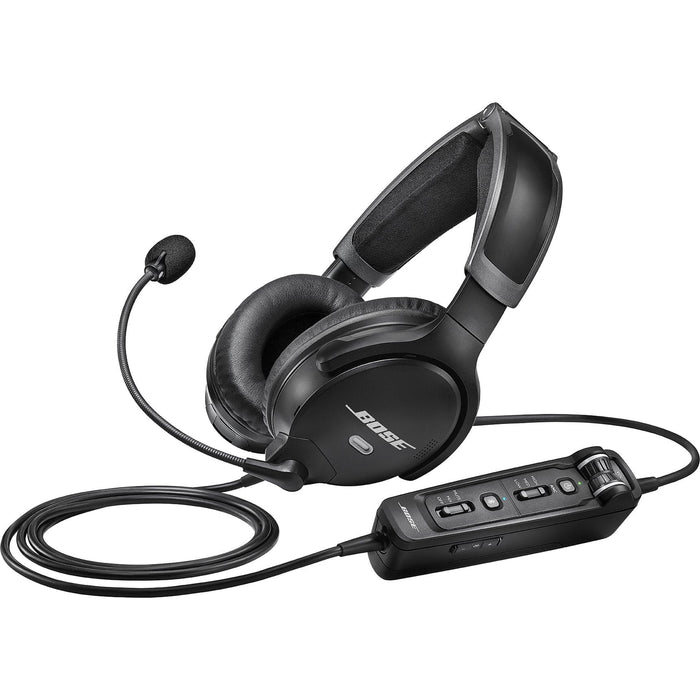
Bose’s legendary reputation in aviation audio is well-earned, and the Bose A30 is the brand’s latest top-of-the-line offering. Replacing the long-time favorite A20, the A30 takes what pilots loved about the A20 and improves upon it. It features three selectable ANR modes (High, Medium, Low) that let you tailor noise cancellation to your environment, whether you’re in a loud piston cockpit or a quieter turbine. At just 14.2 ounces, the A30 is lightweight with 20% lower clamping force than the A20, meaning noticeably less pressure on your head during long flights. The plush ear cushions and refined headband design make it extremely comfortable for all-day wear. An integrated Bluetooth audio interface allows pairing with your phone or tablet for music, calls, or EFB alerts. For professional and serious GA pilots, the Bose A30’s combination of superior ANR, comfort, and build quality makes it the ANR headset to beat in 2025.
2. Lightspeed Zulu 3 Premium ANR Bluetooth Aviation Headset

The Lightspeed Zulu 3 has proven itself as one of the top ANR headsets over the past few years, and it remains a pilot favorite in 2025. This is a premium headset that offers outstanding active noise cancellation, great audio quality, and a long list of features. With Bluetooth connectivity for phone and music, an auxiliary input, and ComPriority, the Zulu 3 is packed with conveniences. Lightspeed optimized the Zulu 3 for comfort and durability: it has plush leather ear seals, a lightweight yet sturdy build, and a stainless steel headband. Many users praise the clarity of communication. Another plus is Lightspeed’s generous 7-year warranty, one of the best in the industry. The Zulu 3 provides excellent value in the high-end headset category.
3. David Clark One-X Bluetooth ANR Aviation Headset: Bluetooth Wireless Advanced Comfort Features 41307G-01
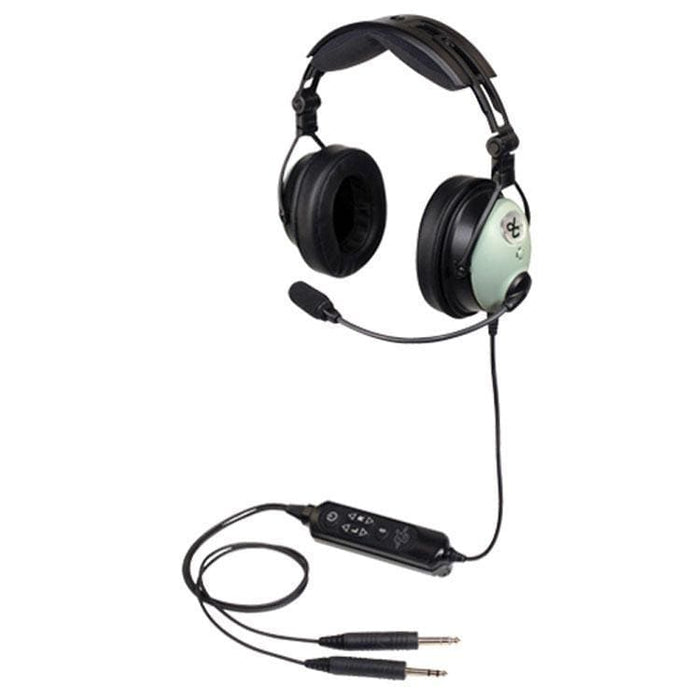
The David Clark One-X brings the revered David Clark brand into the world of advanced ANR. The One-X is an over-ear ANR headset that strikes an excellent balance of comfort, technology, and traditional durability. It uses hybrid noise cancellation to achieve a very quiet experience. True to David Clark form, the One-X is built tough but remains lightweight (about 12.3 ounces). It has leatherette ear seals and a vented head pad. Bluetooth is built-in for phone connectivity and music. David Clark backs the One-X with a 5-year warranty and excellent customer service. For pilots who want excellent ANR performance from a trusted brand, the One-X is a fantastic choice.
4. Lightspeed Sierra ANR Bluetooth Aviation Headset

The Lightspeed Sierra is often highlighted as a great budget-friendly ANR headset without sacrificing quality. Positioned below the Zulu in Lightspeed’s lineup, the Sierra offers very impressive performance for its price. It features active noise cancellation that approaches the effectiveness of the Zulu 3, a full Bluetooth interface for phone/music, and many of the same comforts Lightspeed is known for. While slightly bulkier than the Zulu, pilots report it is comfortable for typical flight lengths. For student pilots or anyone shopping in the mid-range, the Lightspeed Sierra is a smart pick, backed by Lightspeed's 5-year warranty.
5. Bose ProFlight Series 2 ANR Aviation Headset Dual GA Plugs with Bluetooth 789812-5020
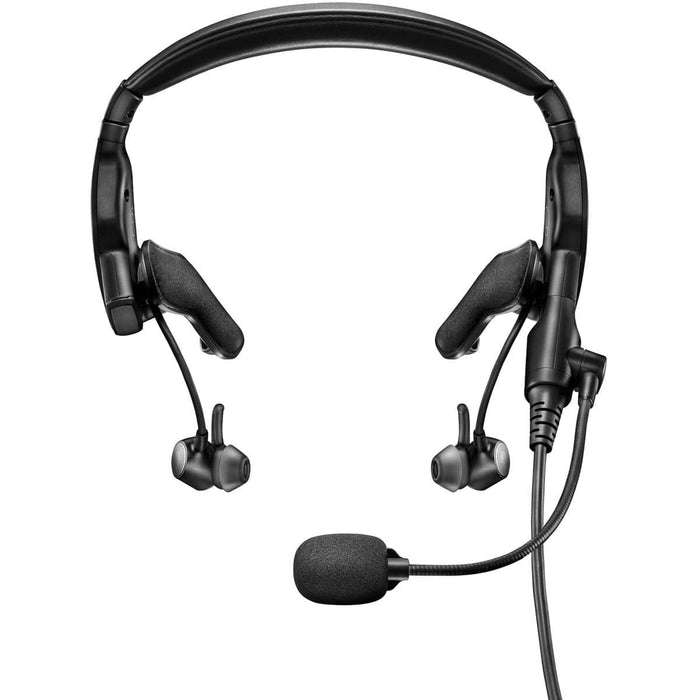
The Bose ProFlight Series 2 is Bose’s in-ear ANR headset, designed primarily for professional pilots in quieter aircraft but loved by some GA pilots for its ultra-lightweight feel (only 4.5 ounces). It uses small earbud-style earpieces and a thin headband. Despite its size, it has digital ANR effective in turbine cockpits and decent in GA planes. It features tap control to hear cabin conversations, selectable noise cancellation modes, and Bluetooth. The Series 2 is more durable with an improved cable and mic clarity. It’s TSO-certified and ideal for pilots prioritizing minimal weight and maximum comfort on long flights.
6. PilotMall.com Next Gen Sound Silencer ANR Aviation Headset with Bluetooth
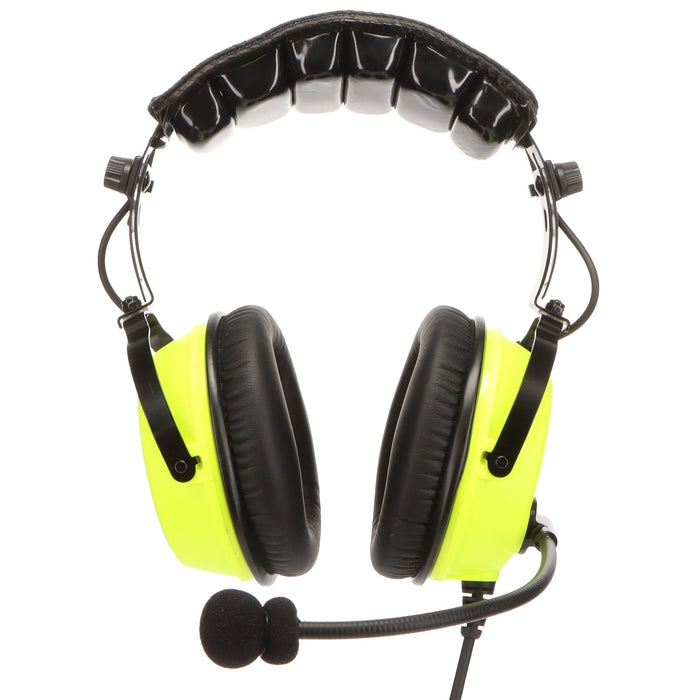
Rounding out our list is the PilotMall.com Next Gen Sound Silencer ANR headset, offering tremendous value. It boasts an impressive 29 dB of active noise reduction (on top of ~23 dB passive), rivaling pricier headsets. It comes in high-visibility safety green, equipped with Bluetooth, a 3.5mm aux input, and a 3-way audio priority switch. Thoughtful touches include battery status and Bluetooth connection LEDs. It uses thick faux-leather ear cushions and an adjustable headband. Running on AA batteries with auto-shutoff, this headset is an excellent choice for student pilots or anyone wanting strong ANR performance without breaking the bank, backed by a 3-year warranty.
These six headsets each offer something special, from the cutting-edge tech of the Bose A30 to the value of the PilotMall Sound Silencer. Upgrading to one of these ANR headsets in 2025 will significantly enhance your flying experience.
Frequently Asked Questions
- What’s the best headset for professional pilots?
- Professional pilots often prefer top-tier ANR headsets like the Bose A30 or Lightspeed Zulu 3 for their advanced noise-canceling features, all-day comfort, and reliable performance. These models excel in commercial operations where clear communication and reduced fatigue are critical.
- Are there any good aviation headsets under $500?
- Absolutely. For passive noise reduction, the David Clark H10-13.4 (around $350–$400) is a time-tested, ultra-reliable headset. On the ANR side, the PilotMall.com Next Gen Sound Silencer (under $400) offers remarkable ANR performance for its price. Other budget-friendly PNR options also exist, providing good performance without a premium price tag.
- Do student pilots need noise-canceling (ANR) headsets?
- Not necessarily, but they can be very beneficial. Many student pilots start with a more affordable passive headset. However, an ANR headset can make training more pleasant by reducing noise and fatigue. If budget allows, investing in an ANR headset early, such as a Lightspeed Sierra or the PilotMall Next Gen Sound Silencer, can be worth it for the comfort and focus it provides.
- Why is noise cancellation important in aviation headsets?
- Noise-canceling headsets reduce cockpit noise, which in turn reduces pilot fatigue and potential hearing damage. Constant exposure to engine noise can be tiring and harmful over time. By using ANR to cancel out low-frequency engine and wind noise, you can fly longer without feeling as drained and hear communications more clearly, contributing to safety and comfort.
- How does the Bose A30 compare to the older Bose A20?
- The Bose A30 is the successor to the famed A20. Pilots report the A30 has slightly better noise cancellation, especially in low-frequency ranges, and introduces selectable ANC modes (High/Med/Low). The A30 is also more comfortable due to reduced clamping force and an improved earcup design. Both have excellent audio clarity and Bluetooth, but the A30’s updated electronics and ergonomics make it a worthy upgrade. The A20 remains a very good headset if found at a good price.
- How long do ANR headset batteries typically last?
- Battery life varies by model and battery type (usually AA). Many popular ANR headsets like the Bose A30 can last 40-45+ hours on a pair of AA batteries. Lightspeed models also offer similar or slightly less endurance. Most ANR headsets also feature auto-shutoff to conserve power. Some headsets can also be powered directly by the aircraft electrical system using a 6-pin LEMO connector.
- Can I use ANR headsets for passengers?
- Yes, ANR headsets can be great for passengers, significantly improving their comfort and enjoyment of the flight by reducing noise and allowing easier conversation. If you upgrade your own headset, your previous ANR or PNR headset can be an excellent option for your passengers.
Want to learn more about aviation headsets?
Check out these guides!
- 11 Best Aviation Headsets to Kill the Noise
- 12 Pilot Flight Bag Essentials You Should Always Be Carrying
- The Best Aviation Headsets for a New "Student" Pilot - High End or Economy?
- What is the Bose A30 Headset? Why should you consider an upgrade?
Did you find this article helpful?
Do you think we missed anything important? Let us know in the comments below!






























2 comments
While I love ANR technology, the one drawback that I have found is you can’t hear what the airplane is doing, especially the engine. Many times, you will hear what the engine is doing before you can see it on a gauge (if you get an indication at all). I prefer passive noise reduction because it allows me to monitor all aspects of flying the airplane from engine noise, open doors and windows, cargo doors slapping in the slipstream, etc. while still allowing me to monitor the radios and other auditory indicators. For me, passive headsets help me with the safety of flight.
OK, here’s the “deal” with ANR; while the noise *cancellation” is usually excellent, the noise *protection” to the ear continues to be “suspect.” An ANR set does not claim to be protective against physical damage. Therefore, if this is a concern, it has been suggested to use ear plugs while using an ANR set to mitigate the possible long term physical damage to the ear.
One more thing: there are some sounds a pilot should be hearing, like sounds an engine makes if it is about to fail.
ANR presents a problem not unlike polarized glasses when looking at some instruments on the panel – they black out when viewed at certain angles.